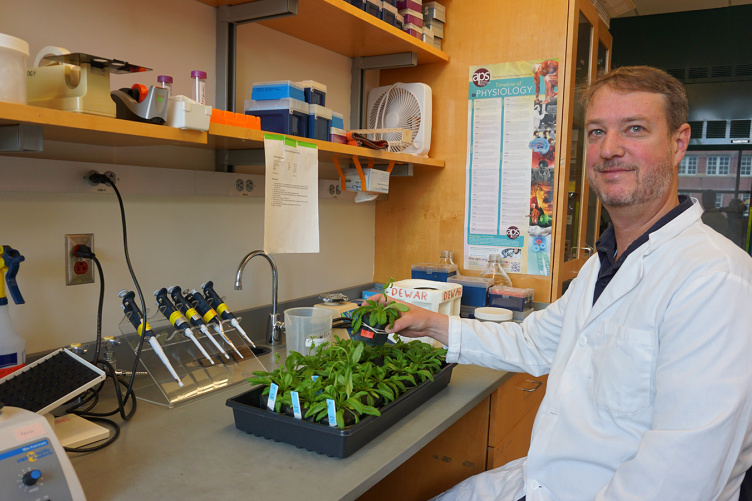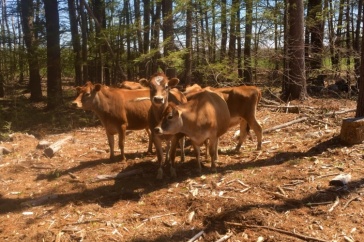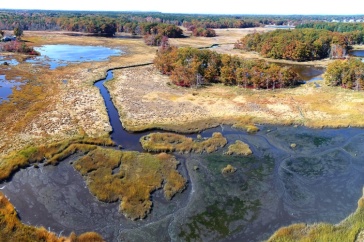
DNA, the hereditary code that acts as the instructional manual in every living cell, is under constant threat of attack. At any given moment, plants and animals are dealing with cellular DNA strand breaks and making decisions about whether to repair the damage or kill the cell.
In humans, most cells with DNA damage die because the decision to repair carries the risk of producing a cancer-causing mutation. Plants, however, are a different story. With no threat of cancer, they will repair the cell more often than kill it.
But we know very little about how plants repair the types of damage that would lead to cell death in humans — knowledge that could have important implications for agriculture.
That is what Kevin Culligan, a research assistant professor at the UNH College of Life Sciences and Agriculture, is seeking to understand. Earlier this year, the National Science Foundation awarded Culligan close to $650,000 to study how pathogens cause DNA double strand breaks—the most serious type of DNA damage—in plants and how plants repair those breaks. The three-year grant also includes funds to train high school, undergraduate and graduate investigators.
Culligan is working with Arabidopsis thaliana plant because it’s small, inexpensive to grow and is part of a large family of plants that includes broccoli, cauliflower and kale. The self-pollinating plant is also a popular model organism among molecular biologists.
He and his lab assistants are using gamma radiation to induce the DNA damage that could kill a human, but for plants amounts to something more akin to a mild flesh wound.
“If there is a tumor on a leaf, it’s pretty inconsequential,” says Culligan. “It doesn’t move around or spread throughout the plant. So more often than not, the plant repairs the damaged cell. Which means plants give scientists an opportunity to study the repair process of DNA damage that they simply can’t study in humans, because that type of damage will almost always be deemed irrepairable.”
The research, he says, could result in the development of plant strains resistant to common pathogens that destroy crops and bedevil growers.
While Culligan doesn’t rule out the possibility that the work could also have implications for biologists who study DNA damage in animal cells, his more immediate goal is to provide data that supports the development of pathogen-resistant crops.
“If we understand how plants interact with pathogens and how they defend themselves against these pathogens, we can build a better plant,” Culligan explains.
And although Culligan is in it for the long haul, in scientific research every moment in the lab contains the possibility of an early, unexpected breakthrough.
“You can discover something tomorrow that changes everything,” he says.
-
Written By:
Sarah Schaier | College of Life Sciences and Agriculture

















































